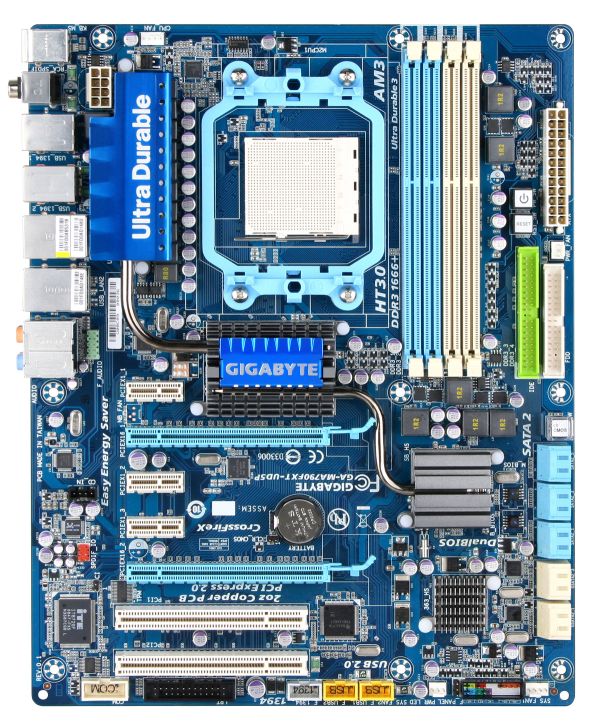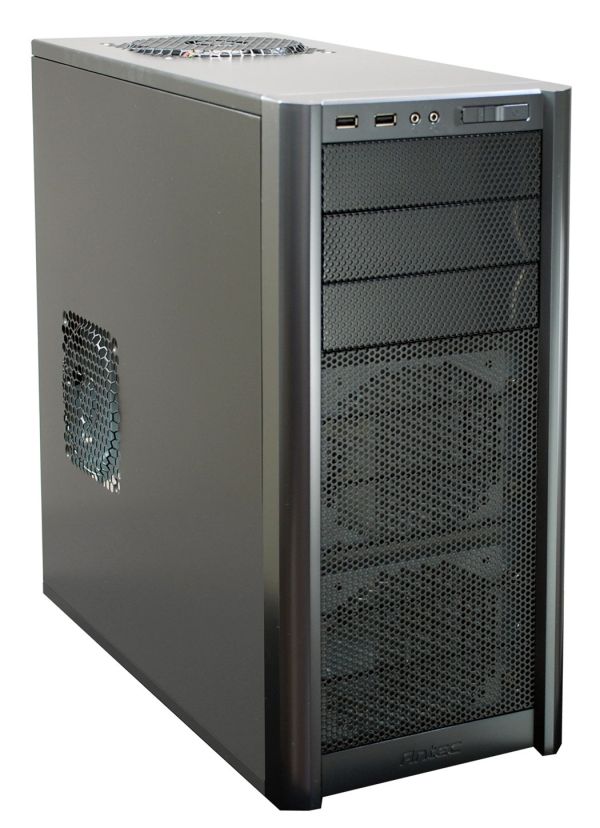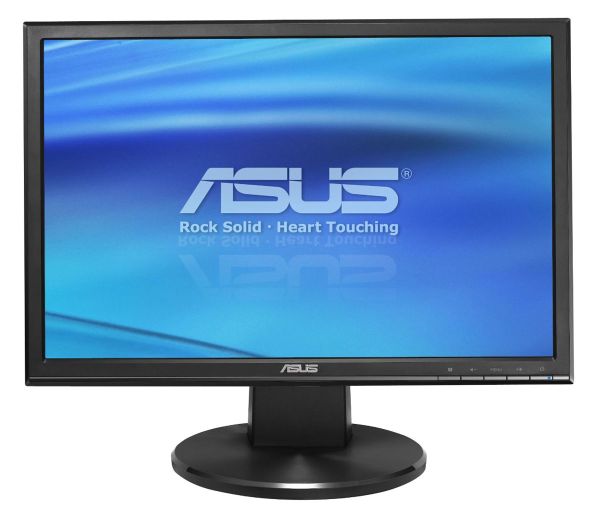Budget System Builder’s Guide February 2011
by Zach Throckmorton on February 14, 2011 12:00 AM ESTBasic System Builds
There's plenty of overlap between our AMD and Intel recommendations these days; the only major differences are in the choice of CPU and motherboard. As such, we're going to start there and then discuss all the common components below.
Base AMD System
| AMD Budget System | |||
| Component Type | Make & Model | Price | Rebate |
| CPU | AMD Athlon II X2 250 | $61 | |
| Motherboard | Gigabyte GA-880GM-D2H | $80 | ($10) |
| RAM | Patriot 4GB 2x2GB PSD34G1333K | $40 | ($5) |
| Hard Drive | Seagate 500GB ST3500418AS | $40 | |
| Optical Drive | LG GH24NS50 | $17 | |
| Power Supply | Antec Earthwatts EA-380D | $40 | |
| Case | Antec Three Hundred | $43 | |
| Operating System | Windows 7 Home Premium 64-bit | $100 | |
| Total Base System Cost | $421 | ($15) | |
| Input | Microsoft Keyboard and Mouse | $15 | |
| Display | ASUS VW193DR Black 19" (1440x900) | $110 | |
| Complete System Cost | $546 | ($15) | |
 AMD’s Athlon II X2 line of processors offers exceptional value for budget builders. The 250 model operates at an even 3GHz, and priced at just $61 it's typically a dollar or two more than the 245 model. In terms of real-world performance, the two CPUs are essentially identical, but 3GHz is a tempting psychological mark to acquire. Micro-ATX motherboards featuring the 880G chipset can offer VGA, DVI, and HDMI outputs from the integrated Radeon 4250 onboard graphics. This onboard GPU is more than capable of running Windows 7’s Aero UI and can easily handle 1080p video. It’s also able to run older and lightweight games like World of Warcraft, albeit only at lowered settings. At $70 (with rebate), Gigabyte’s GA-880GM-D2H is an excellent choice for the motherboard. Biostar’s A880G+ is a slightly less expensive alternative. Both offer very similar features and choosing between them is largely a matter of personal preference. For a combined price of $131, the AMD CPU and motherboard offer a lot of bang for the buck.
AMD’s Athlon II X2 line of processors offers exceptional value for budget builders. The 250 model operates at an even 3GHz, and priced at just $61 it's typically a dollar or two more than the 245 model. In terms of real-world performance, the two CPUs are essentially identical, but 3GHz is a tempting psychological mark to acquire. Micro-ATX motherboards featuring the 880G chipset can offer VGA, DVI, and HDMI outputs from the integrated Radeon 4250 onboard graphics. This onboard GPU is more than capable of running Windows 7’s Aero UI and can easily handle 1080p video. It’s also able to run older and lightweight games like World of Warcraft, albeit only at lowered settings. At $70 (with rebate), Gigabyte’s GA-880GM-D2H is an excellent choice for the motherboard. Biostar’s A880G+ is a slightly less expensive alternative. Both offer very similar features and choosing between them is largely a matter of personal preference. For a combined price of $131, the AMD CPU and motherboard offer a lot of bang for the buck.
Base Intel System
| Intel Budget System | |||
| Component Type | Make & Model | Price | Rebate |
| CPU | Intel Pentium G6950 | $95 | |
| Motherboard | MSI H55M-E21 | $70 | ($10) |
| RAM | Patriot 4GB 2x2GB PSD34G1333K | $40 | ($5) |
| Hard Drive | Seagate 500GB ST3500418AS | $40 | |
| Optical Drive | LG GH24NS50 | $17 | |
| Power Supply | Antec Earthwatts EA-380D | $40 | |
| Case | Antec Three Hundred | $43 | |
| Operating System | Windows 7 Home Premium 64-bit | $100 | |
| Total Base System Cost | $445 | ($15) | |
| Input | Microsoft Keyboard and Mouse | $15 | |
| Display | ASUS VW193DR Black 19" (1440x900) | $110 | |
| Complete System Cost | $570 | ($15) | |
 The least expensive CPU available for Intel’s LGA 1156 socket is the Pentium G6950 at $95. The MSI H55M-E21 and Biostar TH55B HD motherboards offer nearly identical features, and both are solid choices for a basic Intel build. Intel’s integrated graphics on the G6950 are far superior to Intel’s older motherboard-based integrated graphics, and are competitive with the Radeon 4250 (but note that the G6950 IGP is clocked at a slower 533MHz compared to some of the faster Arrandale chips, so the HD 4250 holds a clear lead unless you go with something like the i5-661).
The least expensive CPU available for Intel’s LGA 1156 socket is the Pentium G6950 at $95. The MSI H55M-E21 and Biostar TH55B HD motherboards offer nearly identical features, and both are solid choices for a basic Intel build. Intel’s integrated graphics on the G6950 are far superior to Intel’s older motherboard-based integrated graphics, and are competitive with the Radeon 4250 (but note that the G6950 IGP is clocked at a slower 533MHz compared to some of the faster Arrandale chips, so the HD 4250 holds a clear lead unless you go with something like the i5-661).
Here's where we pay the Intel tax: the combined motherboard and CPU cost for our budget Intel platform checks in at $155, $25 more than the AMD system. [Ed: Prices can fluctuate wildly, and earlier in the week the difference in pricing was $50; the review was written from the perspective of a $50 difference, and while we updated the tables we have left most of the text in place. Just be aware that a swing of $25 or more over the course of a week is not unusual.] You could put that money towards a faster CPU, a discrete GPU, a larger/faster HDD/SSD, etc. The other side of the story is that the Intel platform will generally consume 10W less at idle, and the gap can be as large as 40-50W under load; if you leave your system on 24/7, you'll make up the difference in cost with power savings over the course of five years (give or take)—or as little as 1-2 years if you happen to run Folding@Home constantly. Considering what most of us pay for cell phones and broadband Internet, though, there are probably better ways to save money if you need it.
Common Components
As mentioned above, the remaining components are common to both builds. Starting with the memory, DDR3 is as cheap as it’s ever been, with $10/GB without rebate options common. With rebates, it’s possible to pay less than $10/GB – Patriot’s 2x2GB (4GB total) PSD34G1333K is currently $40 shipped with a $5 rebate, for example. With prices that low,  there's really no need to consider anything less than 2x2GB RAM; likewise, there's little point in upgrading a budget system to more than 4GB unless you happen to use some applications that will actually benefit.
there's really no need to consider anything less than 2x2GB RAM; likewise, there's little point in upgrading a budget system to more than 4GB unless you happen to use some applications that will actually benefit.
Hard drives with one platter at 500GB capacity can routinely be found for $40 shipped or less, and the performance differences between the major manufacturer’s mainstream (i.e. non-green, non-high performance) drives are typically only apparent in synthetic benchmarks. Currently, Seagate’s ST3500418AS is only $38 shipped. Optical drives also have very little product differentiation at the budget end, with $20 or less shipped for a DVD burner now commonplace. Patience can yield a dual layer and/or LightScribe DVD burner for less than $20, e.g. LG’s GH24NS50 is available for $17 shipped right now.
Cases are highly subjective, as different aesthetics appeal to different people. Antec’s Three Hundred is regularly available for $60 or less shipped, and right now it’s offered for $43. It features a tri-cool 120mm rear exhaust fan and a tri-cool 140mm top exhaust fan. It also has placements for two front 120mm intake fans. These fans, as well as a good cable management system, make it great for keeping a system running cool. Its downsides are that it has little to no noise dampening and it’s made of steel, so it’s heavy. For a budget build, there's no need for extra fans and the overall quality of the Three Hundred is very good.
 Many builders choose the power supply as an area to cut down on total system cost, but don’t buy a cheap PSU! Besides the lower quality and potential problems down the road, efficiency is also worse so you end up paying for cheap PSUs in the long run. Antec offers its 380W Earthwatts model for $50 or less shipped, but it’s often on sale for $40 shipped, and sometimes less with a rebate. It’s 80 Plus certified and as high quality as can be commonly be found for under $50. Corsair’s new Builder Series CX430 is usually a bit cheaper, but does not receive the excellent reviews its predecessors did and is generally regarded as slightly inferior to the Antec Earthwatts 380W, but is nevertheless a viable alternative.
Many builders choose the power supply as an area to cut down on total system cost, but don’t buy a cheap PSU! Besides the lower quality and potential problems down the road, efficiency is also worse so you end up paying for cheap PSUs in the long run. Antec offers its 380W Earthwatts model for $50 or less shipped, but it’s often on sale for $40 shipped, and sometimes less with a rebate. It’s 80 Plus certified and as high quality as can be commonly be found for under $50. Corsair’s new Builder Series CX430 is usually a bit cheaper, but does not receive the excellent reviews its predecessors did and is generally regarded as slightly inferior to the Antec Earthwatts 380W, but is nevertheless a viable alternative.
 Including the $100 cost of Windows 7 Home Premium 64-bit (OEM version), the basic AMD build checks out at $421 out of pocket with $15 in mail in rebates, and the basic Intel build costs $445 with $15 in mail in rebates. If you already have a keyboard, mouse, and LCD that's all you'll need; otherwise plan on spending around $20 for a keyboard and mouse (we generally prefer the basic Logitech and Microsoft designs, but get whatever you like), and entry-level 19" LCDs start at around $110 shipped (e.g. the ASUS VW193DR). That brings the cost for a complete budget system up to $531 for the AMD build or $555 for the Intel system (after rebates).
Including the $100 cost of Windows 7 Home Premium 64-bit (OEM version), the basic AMD build checks out at $421 out of pocket with $15 in mail in rebates, and the basic Intel build costs $445 with $15 in mail in rebates. If you already have a keyboard, mouse, and LCD that's all you'll need; otherwise plan on spending around $20 for a keyboard and mouse (we generally prefer the basic Logitech and Microsoft designs, but get whatever you like), and entry-level 19" LCDs start at around $110 shipped (e.g. the ASUS VW193DR). That brings the cost for a complete budget system up to $531 for the AMD build or $555 for the Intel system (after rebates).










58 Comments
View All Comments
jonp - Monday, February 14, 2011 - link
not me, i build systems for others and you can't deliver it without the OS. it's integral to the cost of the system. along with the power cord some have also commented on.kevith - Monday, February 14, 2011 - link
Yep...HangFire - Tuesday, February 15, 2011 - link
It's a hard cost, keep it.Icabus - Monday, February 14, 2011 - link
On the Base System Performance Summary page under the CPU Upgrades section:AMD offers five compelling CPU upgrades to the Athlon II X4 250.
This should be the X2 not the X4.
SmCaudata - Monday, February 14, 2011 - link
When you talk about the i5-760 you don't mention the need for a discrete video card. Doesn't seem like an upgrade option you should mention in this budget segment.JarredWalton - Monday, February 14, 2011 - link
True. I've updated the text just to make this clear. We really aren't recommending anyone go out and buy an i5-760 right now. It's a fine CPU, but for the cost and features, I would much rather wait a month or so and get Sandy Bridge -- which has an IGP as well.geniekid - Monday, February 14, 2011 - link
In general, I think AT is second to none as far as tech websites go. But, for system building, I think I still have to give the nod to Tom's Hardware and it's System Builder Marathons because they actually assemble their machines and bench them. Don't get me wrong. AT's bench is an invaluable resource, but if I'm dropping that much money to build a new machine based on the recommendations of an online article, I feel a lot more confident if the article writers actually built the thing.Gigantopithecus - Monday, February 14, 2011 - link
Hi geniekid - Zach here, thank you for your feedback. I agree that giving actual numbers from actual benchmarks, and probably also pictures of the finished systems as well, would be more effective than simply assuring you that I've built all of these systems for friends and know what they can do, and that they can do it well. ;) I'll keep that in mind if I'm asked to write more guides in the future.trogthefirst - Tuesday, February 15, 2011 - link
Right on!Vincent - Monday, February 14, 2011 - link
I was surprised to see the article recommend OCZ Vertex 2 SSDs in light of the recent controversy over the switch to slower 25nm NAND flash. Basically they switched the type of chips they used and now the drives are slower. This thread has more detailshttp://forums.anandtech.com/showthread.php?t=21421...
Clearly, the new drives' slower speeds will still blow away a mechanical drive, but this move by OCZ and their response to customer complaints hurts their reputation.
I know that Anand has been very complimentary toward OCZ when at the same time he has had very strong pro-consumer words about Intel's handling of their chipset issues. It would be nice to see Anand's take on the OCZ issue and to see him encourage OCZ to respond better to consumers.